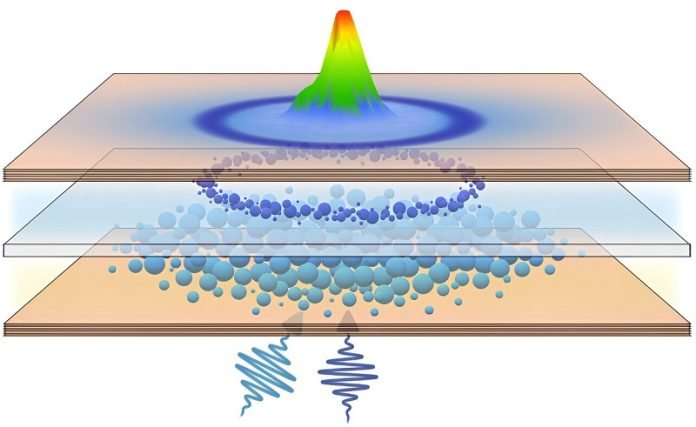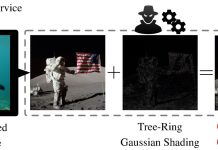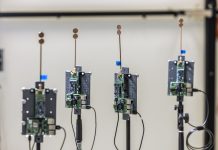
Have you ever imagined a world where computers work at the speed of light?
This might sound like something from a science fiction movie, but scientists are making it a reality.
A group of smart physicists have made an exciting step forward in controlling light to potentially make computers way faster than they are today.
They’ve published their findings in a journal called Physical Review Letters.
To understand this, we need to know about tiny things called polaritons. Polaritons are like little drops of light that also have a bit of matter in them.
Think of them as a sort of “liquid light.” Scientists are interested in polaritons because they can help us create computers that work incredibly fast and don’t need the same kind of electricity that our current computers do.
Until now, polaritons had to be super cold to work right, and it was hard to control them in the way we wanted.
But these physicists have found a way to manage these polaritons at room temperature — that’s right, the same temperature that you and I feel comfortable in. This is a big deal because it means we could potentially use this technology in everyday gadgets.
So, how did they do it? These clever researchers added a special layer, made out of a copolymer (that’s a material made from two kinds of molecules), inside the place where they keep the polaritons.
This layer is kind of like a quiet background that doesn’t mess with the polaritons directly but can still affect them.
By shining different colors of light onto this layer, they can make the polaritons move and change the way they behave.
It’s a little like using a remote control to make a toy car go faster or slower, but instead of a car, it’s particles of light, and instead of a remote, it’s beams of light.
What’s really cool is that by doing this, they can control where the polaritons go, how many there are, and their energy. And they can do this very, very quickly.
Anton Putintsev, a scientist who knows a lot about light and matter, is super excited. He says this is like starting a new chapter in the book of technology.
Instead of being stuck with old ways of making things work, they’re using the amazing dance between light and matter to do things differently.
The big hope is that this could lead to new kinds of computers called “all-optical polariton logic devices.” These would be computers that use light to process information, which is much faster than the way our current computers work with electrons.
Plus, they can change how they work on the fly, which means they can adjust to new information really quickly.
This isn’t just theory; it’s something that can actually be put onto chips like the ones in our phones and laptops. That means someday, our devices could be much faster and more powerful without getting too hot or using too much energy.
This new discovery could change the way we think about computers and how we make them work. It’s like we’re on the edge of a new frontier in the tech world, and it’s all thanks to the power of light!
Follow us on Twitter for more articles about this topic.
Source: KSR.



